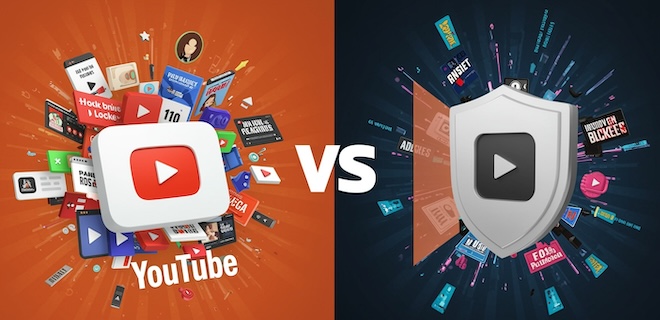
The ad-blocker war is heating up again.
YouTube just reignited the battle with a series of aggressive moves aimed at curbing ad-blocker usage and steering viewers toward its premium subscription tier.
While it may have seemed like the ad blockers won, with platforms and publishers considering those audiences a lost cause, YouTube is determined to get back into the fight. And whether you’re vehemently anti-advertising or just trying to watch YouTube videos without interruption, this latest crackdown is reshaping how users engage with the world’s biggest video platform.
Blocking the Blockers
YouTube first launched its anti-ad-blocker campaign in 2023. It started by asking users to disable their ad blockers when visiting the site, but quickly moved toward disabling video playback for ad-blocker users.
However, some loopholes remained that allowed users of certain web browsers, like Firefox, to deploy ad-blocking browser extensions.
Now, YouTube is implementing tougher enforcement tactics worldwide. These tactics include server-side ad injection, which effectively renders most browser-based ad blockers useless. YouTube is also continuing to issue pop-up warnings and pausing video playback across alternative browsers, such as Firefox, Brave and Opera.
Users are increasingly finding themselves staring at blank screens until they either turn off their ad blockers or upgrade to the paid YouTube Premium plan.
The message is clear: Bypassing ads violates YouTube’s terms of service.
Ad Blockers—The Silent Revenue Killer
In some ways, YouTube’s tactics are understandable.
Ad blocking continues to pose a significant challenge for publishers and platforms. Nearly 1 billion users—or about one out of eight people on Earth—are blocking ads globally.
Plus, mobile adoption of ad blockers is growing. Between 2022 and 2024, the use of mobile ad blockers grew by 30%, according to B2, which provides solutions for publishers that allow them to monetize ad-blocking audiences.
This increased adoption of ad blockers obviously places pressure on monetization models that rely on display, video and programmatic ads.
It’s also a nightmare for audience addressability. Some ad blockers disguise users as “dark traffic,” leaving publishers flying blind when analyzing site visits. These mysterious, untraceable visits often appear without referral data that shows publishers how those visitors arrived on their sites. It’s like trying to track footprints in the dark.
The lack of referral data also makes it easier for bots to slip through. While some of this “dark traffic” may originate from legitimate sources, aggressive ad blockers that strip tracking parameters make it even more challenging to distinguish human traffic from invalid bot impressions.
Monetization at a Crossroads
The recent YouTube crackdown is just the latest example of how the industry is fighting to reclaim lost ground. But is YouTube’s move to strong-arm ad-averse users into premium subscriptions the right play?
In effect, YouTube is designing an increasingly closed system, one that ensures users either deal with seeing ads or pony up for Premium. But what works for YouTube may not work for the rest of the internet.
As ad-blocker developers inevitably respond with countermeasures to YouTube’s latest changes, the cat-and-mouse dynamic will continue. But for publishers, platforms and users alike, the stakes are higher than ever. The question remains: How do you monetize your digital properties without alienating your audience?
YouTube’s approach represents a more forceful shift toward hybrid monetization. Either users will see ads, or they’ll shell out for a subscription—with no loopholes or workarounds allowed.
It may frustrate some viewers, but it also signals where the industry is heading: toward a future where attention is monetized more deliberately and access comes with clear, nonnegotiable trade-offs.